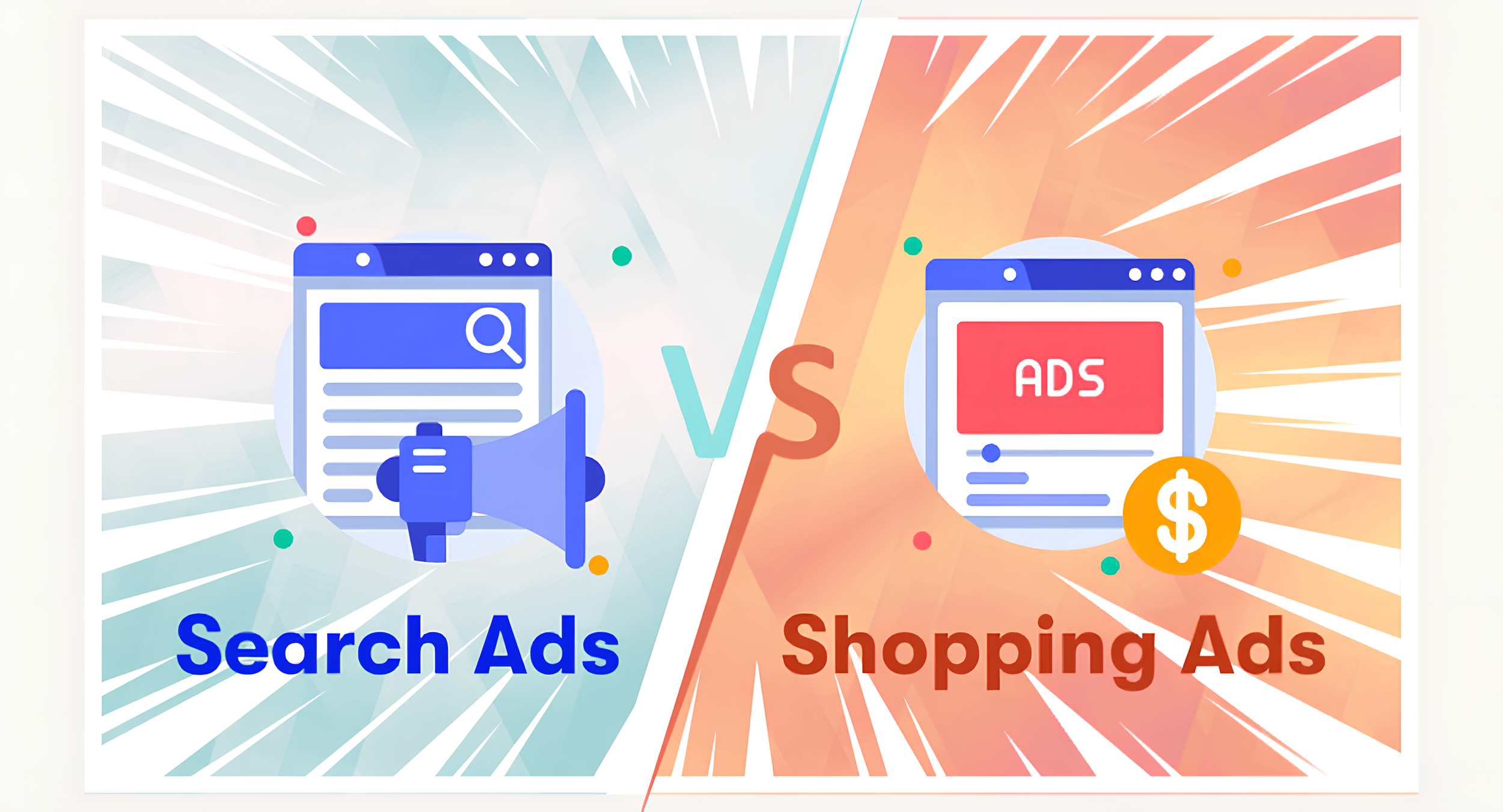Which Google Ad Converts More: Search or Shopping?
When you’re trying to drive sales through Google, the debate often boils down to two heavyweights: Search Ads and Shopping Ads. They both live on the same search results page, but they function in fundamentally different ways. The real question for any business isn't just which one is better, but which one is better for your specific goal. Let’s break it down.
What Are Search Ads?
Think of Search Ads as the classic, foundational pillar of Google advertising. These are the text-based results that appear at the top of the search engine results page (SERP) when a user types in a query. You write the headline, the description, and you choose the keywords that trigger your ad.
This format excels in specific situations:
Services: If you’re a consultant, a contractor, or an accounting firm, you’re not selling a physical product. You’re selling expertise. A text ad gives you the space to explain your value proposition, address a customer’s pain point, and convince them to click for a solution.
High-Ticket Products: Selling something that costs thousands of dollars? A potential buyer needs more than a picture and a price. They need information, reassurance, and a compelling reason to engage. Search Ads let you control that narrative.
Custom Solutions: When your product or service isn't a simple, off-the-shelf item, text ads are essential. You can target long-tail keywords that indicate a user has a very specific problem and then present your ad as the direct answer.
What Are Shopping Ads?
Shopping Ads, on the other hand, are the highly visual, product-centric listings you see in a carousel format, complete with an image, title, price, and store name. They are pulled directly from a product feed you provide to Google Merchant Center.
These are tailor-made for:
eCommerce Stores: If you sell physical goods, Shopping Ads are your bread and butter. They put your product front-and-center, functioning as a digital storefront right on the search page.
Product-Focused Brands: For brands where the visual appeal of the product is a primary selling point—like apparel, home goods, or electronics—Shopping Ads are non-negotiable.
The Conversion Question: Which Ad Type Wins?
There’s no single answer, but the data points to a clear pattern based on user intent.
Shopping Ads typically get more clicks and conversions for simple, commodity-like products. When a user searches for "red Nike running shoes size 10," their intent is crystal clear. They know what they want and are primarily comparing price and availability. The visual format of Shopping Ads serves this user perfectly, leading to a higher click-through rate and a more direct path to purchase.
Search Ads work better when the buyer needs more information before making a decision. A search for "best software for small business accounting" signals a research phase. The user isn't ready to buy; they're looking to understand their options. A well-crafted Search Ad that leads to a detailed landing page or a comparison guide will outperform a product listing every time. It meets the user where they are in their journey.
The Final Verdict:
Asking whether to use Search or Shopping Ads is the wrong question. The most effective advertisers don’t see them as competitors but as two essential tools with different jobs.
Use Shopping Ads to capture high-intent buyers who are ready to purchase a specific product. They are visual, price-transparent, and fantastic for driving direct sales and increasing product visibility.
Use Search Ads to engage customers earlier in the buying funnel. Use them to tell your brand’s story, explain the value of a complex service, and control your messaging with precision. They are your primary tool for lead generation and for purchases that require consideration.
The best approach is a combined strategy. A user might first see your Search Ad while researching a problem, then later be served one of your Shopping Ads when they've narrowed down their product choice. By leveraging both, you cover the entire customer journey, from initial awareness to final purchase, maximizing your traffic, sales, and ultimately, your return on investment.

